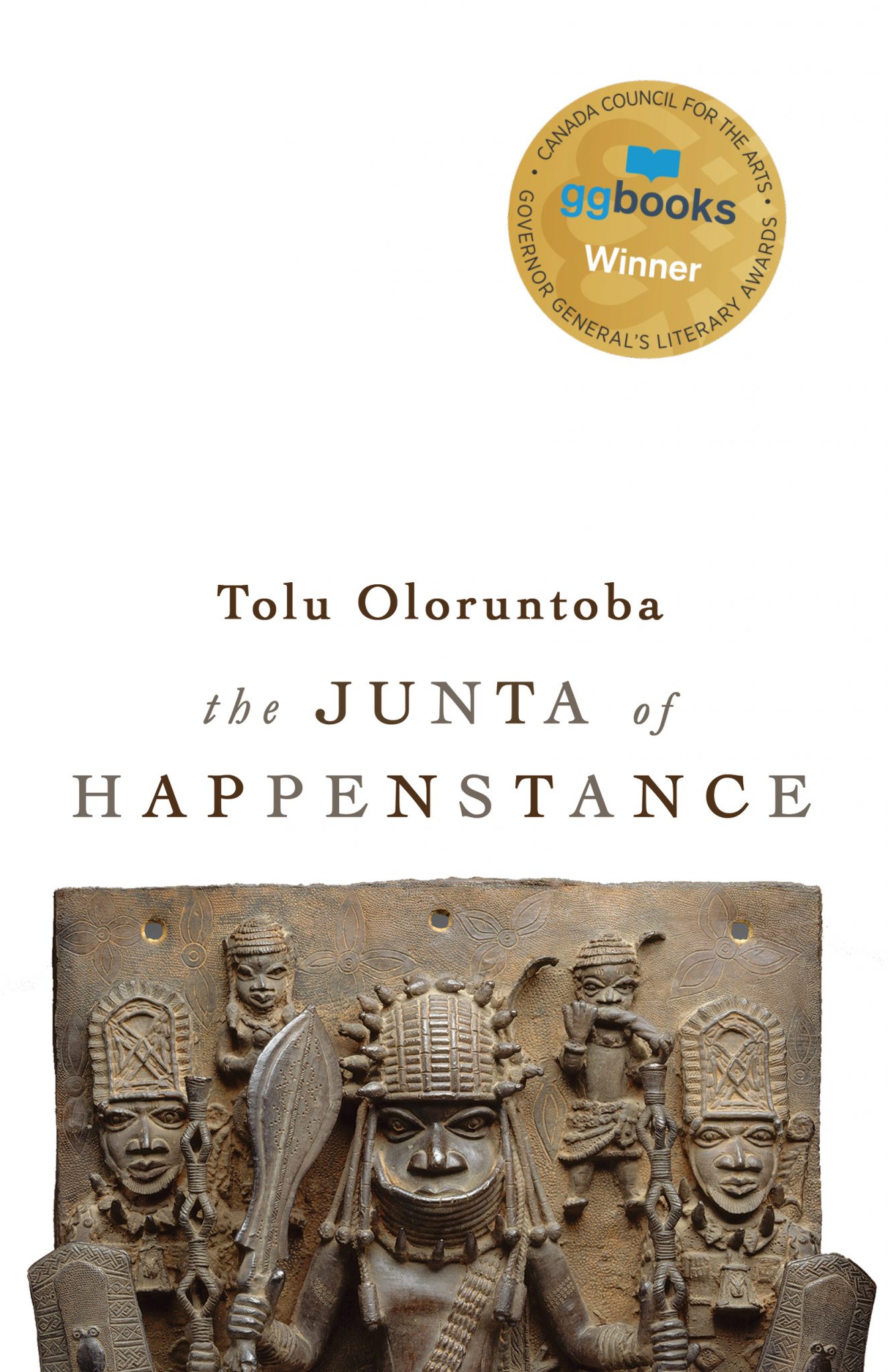In the Junta of Happenstance, Tolu Oloruntoba uses a “safecracker ear” (“Child at Sleep”) to perceive both the subtle and overt mechanics of human interactions and to explore the interlocking parts of past and present, individual and community, and the here and there.

This collection launches with a bold start. The second stanza of the first poem, “Lookout,” reads “Look out, child, clamber above / the fill line of the world” prompting consideration: in what container do we reside, who is above and who is below, and how will the vantage point change for someone who rises above this horizon? One might hope that this elevation brings knowledge or freedom, or perhaps a sense of relief as the world is viewed from an unsubmerged and unobstructed position. These early lines are a foreshadowing. The Junta of Happenstance positions readers above their own fill lines and lays out a geography of truths before them.
Questions function as both harbingers and structural beams in the book. Many of the poems include questions; “We Will Have Questions” asks, “What medallion was this for?,” “Under Thunder” asks, “Where does the ripping cord / of my unravelling wardrobe / catch and billow?,” and “Has Anyone Studied This?” is both a question and a poem title. Questions reveal inner dialogue and interrogate society and the world. For example, “Sieve” asks, “Do I think I’m above the seed hopper, / the jostle to be one of the good ones?” When “Settlers’ Effects” asks, “Do you ever know if a country is yours?” the response could come from either the inside or the outside of the book. In this way, the queries are both statements of wonder and nuclei of conversations.
Oloruntoba’s experience practicing medicine reveals itself as a trail of anatomical and scientific breadcrumbs throughout the work. Uncommon and exact word choices conjure vivid imagery, such as “the roof of your nose is a nerve sheaf” (“Optic Chiasm”), and are used to build rhythm and musicality, for example, “All / the buses of this route / are fused into multiverse, / mitochondrial microcosm” (“In Which I, Again, Am Fighting My Way Out of Things”). But precise language is just one of the components that make this collection profound. Timeless revelations, like “and the history of treaties / is still the history of treachery” (“A History of Treachery”), are as real and pressing in the present moment as they were during the past events discussed in verse.
Diviners and divination make several appearances in the collection; the poem “Grove” reads, “I asked for a diviner, / and one asked why I was sad. / I was, / when I looked.” If we consider divining as an act of detecting or seeing, the Junta of Happenstance performs its own divination in unearthing injustices, centring grace, and illuminating a path forward.
Bios
Samantha Jones
Samantha Jones (she/her) is a poet and writer based in Calgary, Alberta on Treaty 7 territory. Her writing appears in Room, THIS, Grain, CV2, WATCH YOUR HEAD, and elsewhere. Her chapbook, Site Orientation, is forthcoming with the Blasted Tree (Spring 2022). [updated in 2022]

